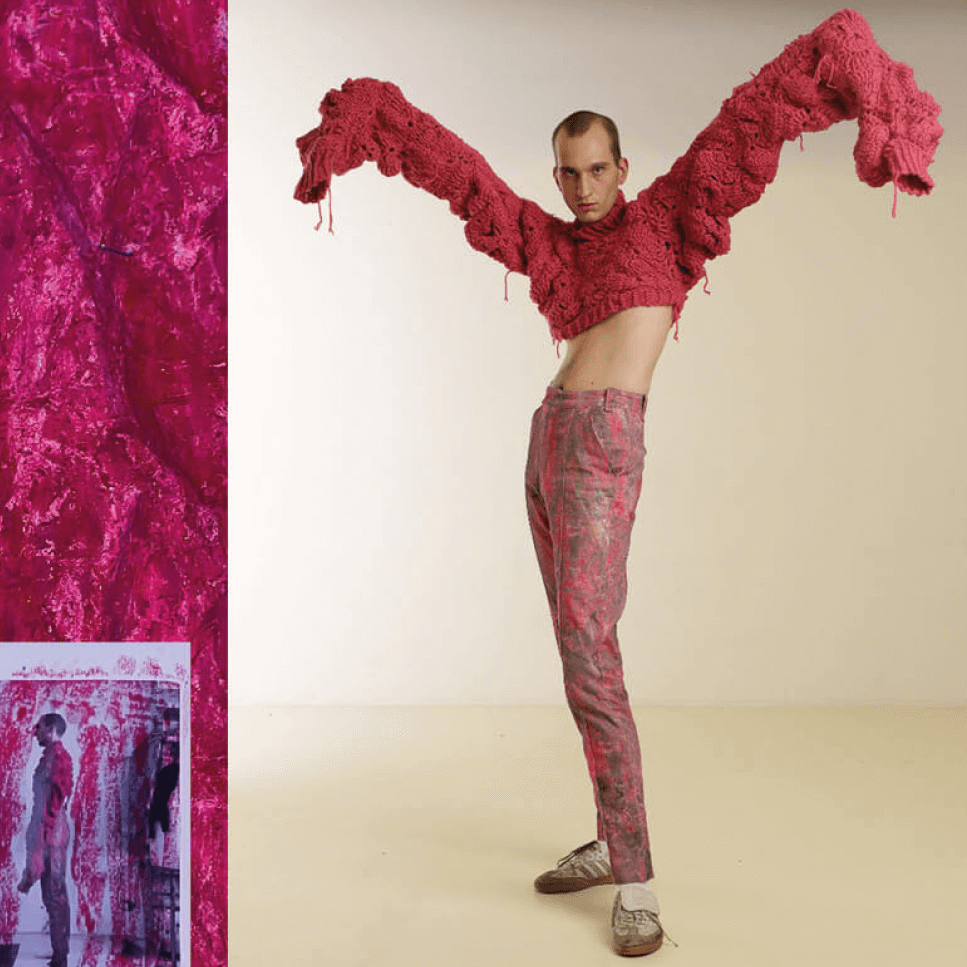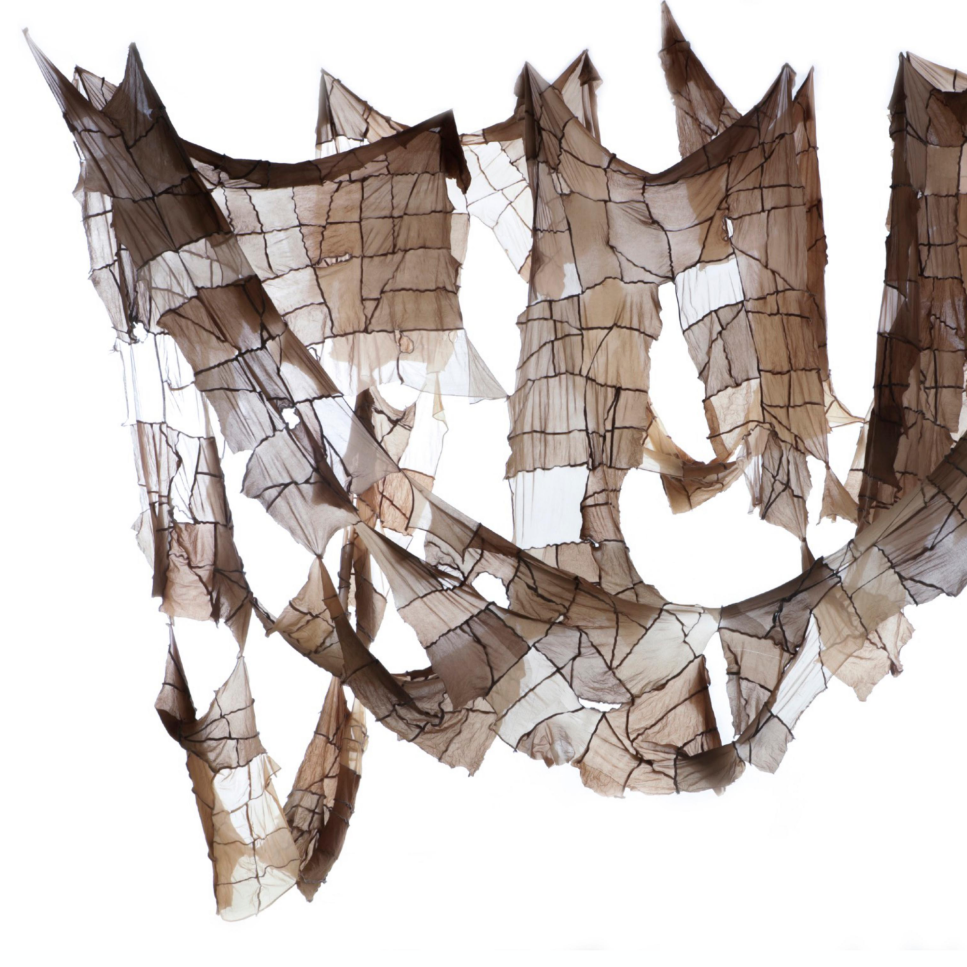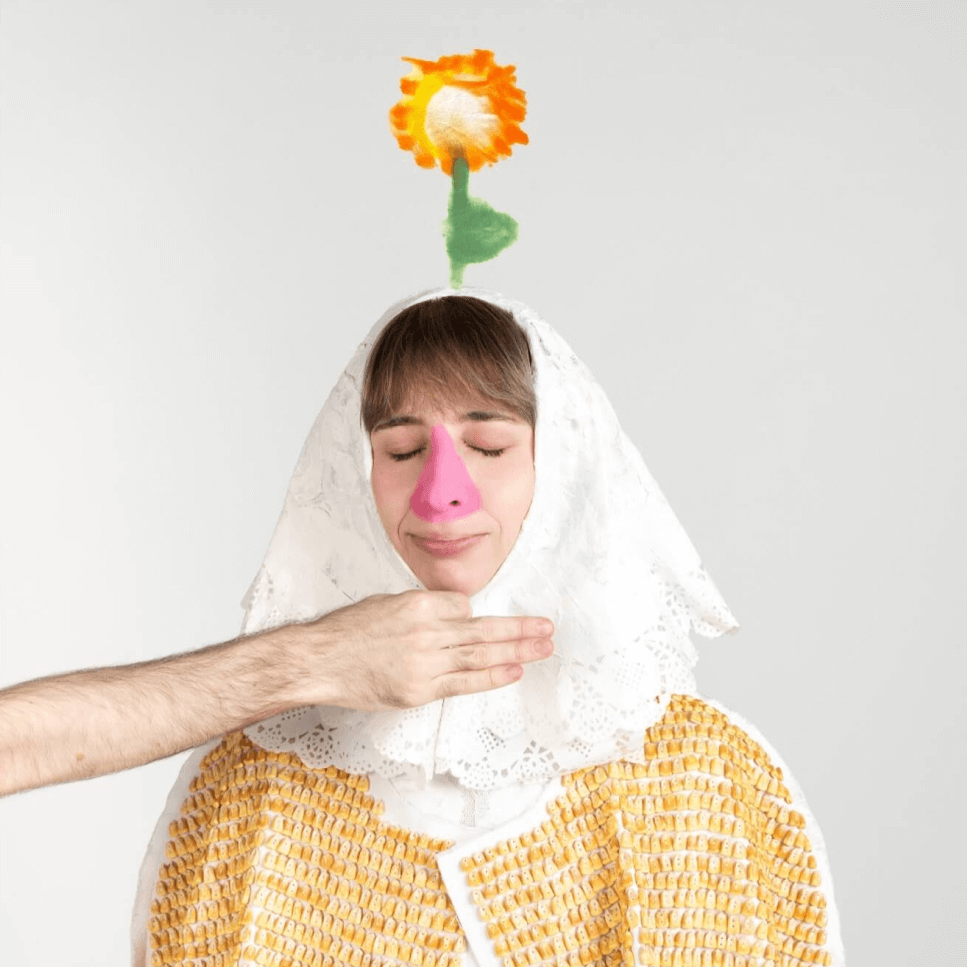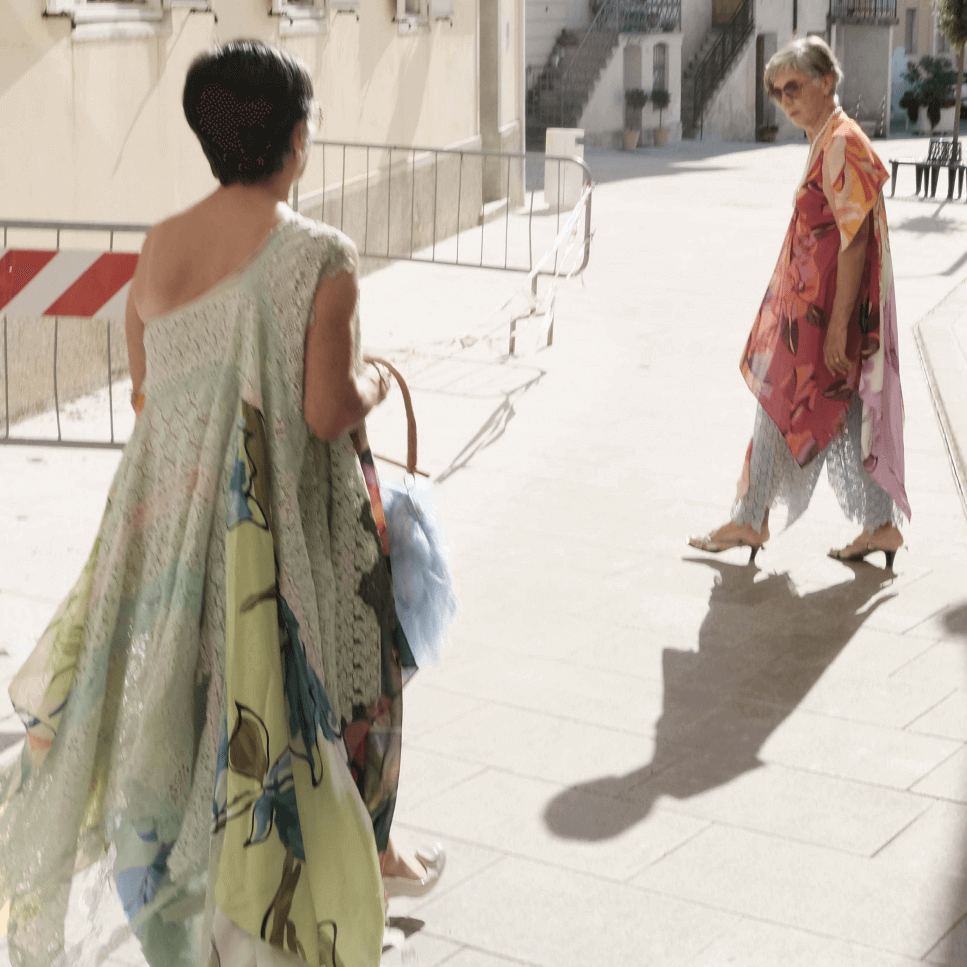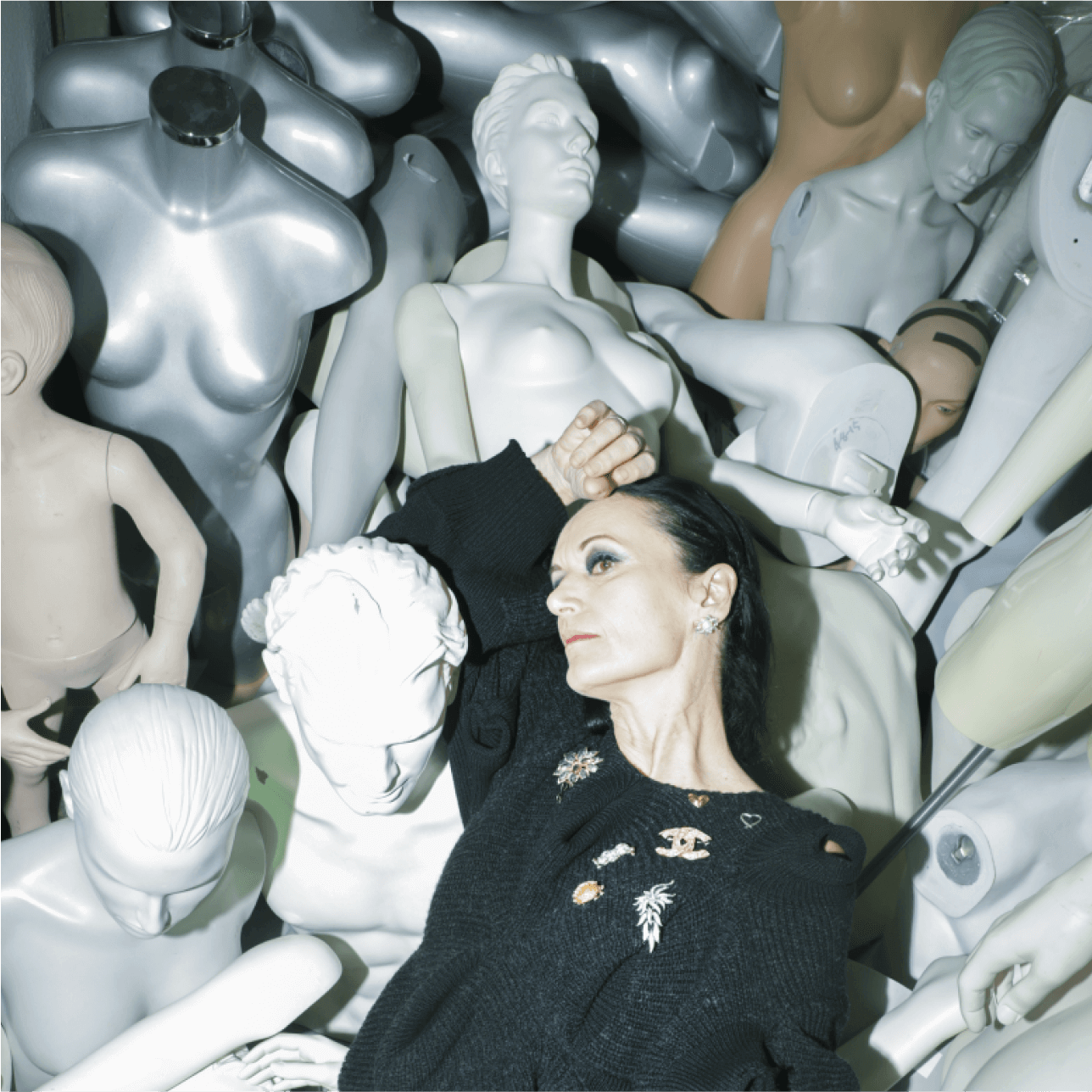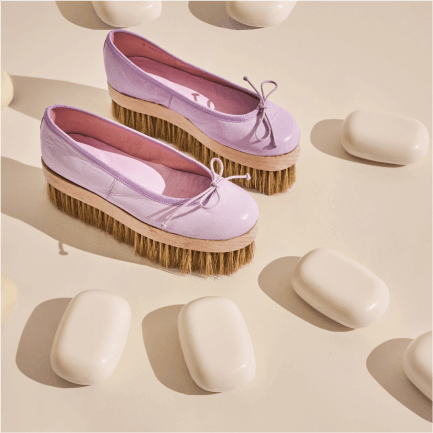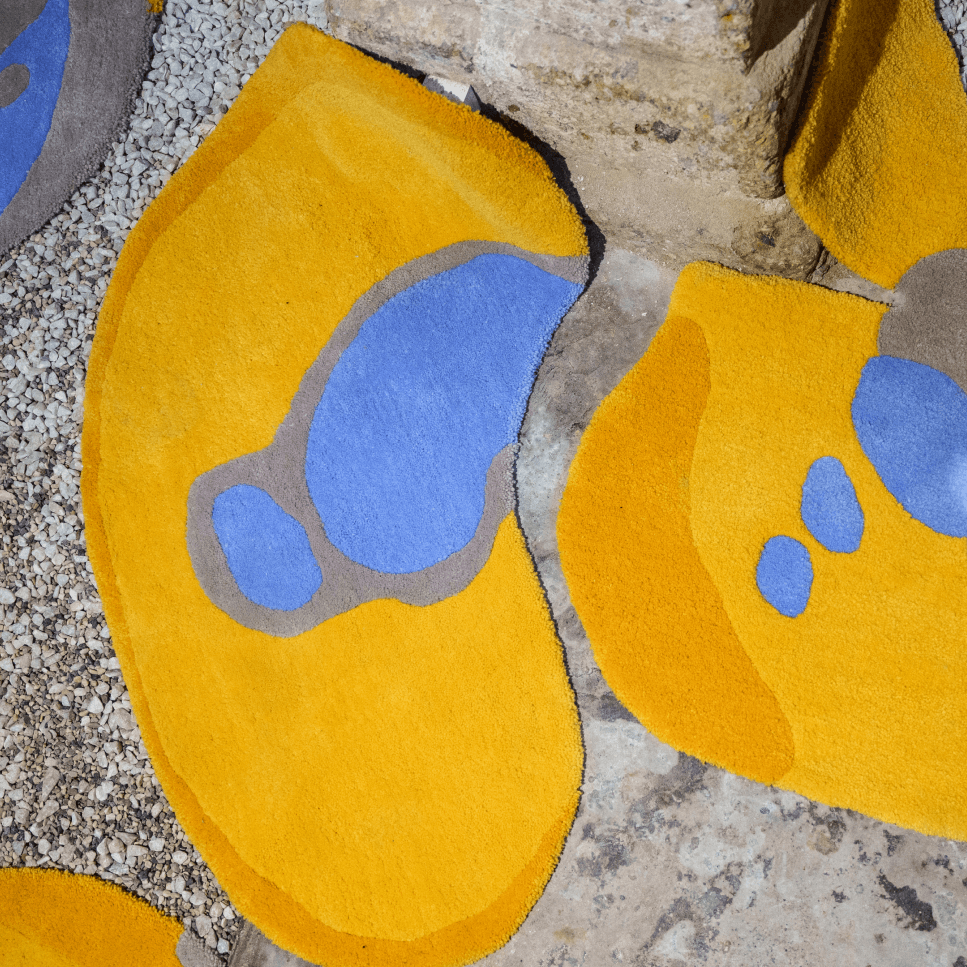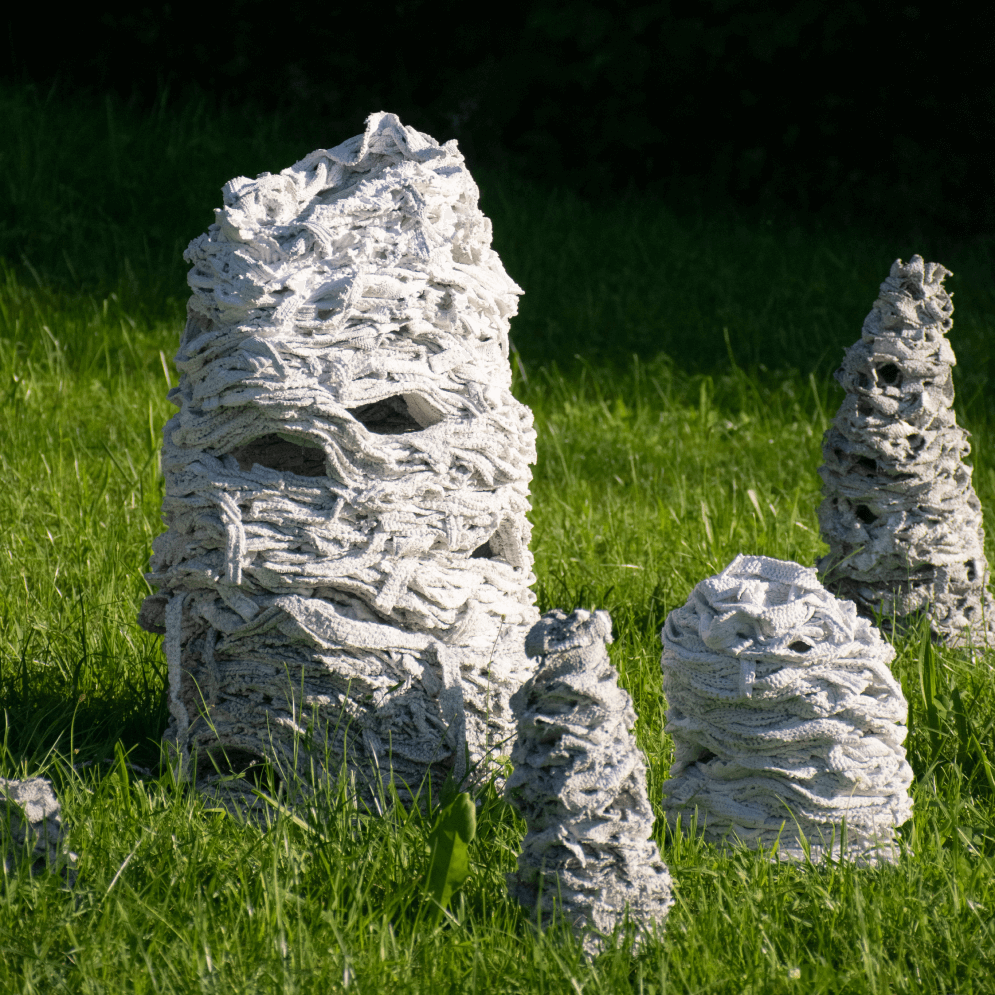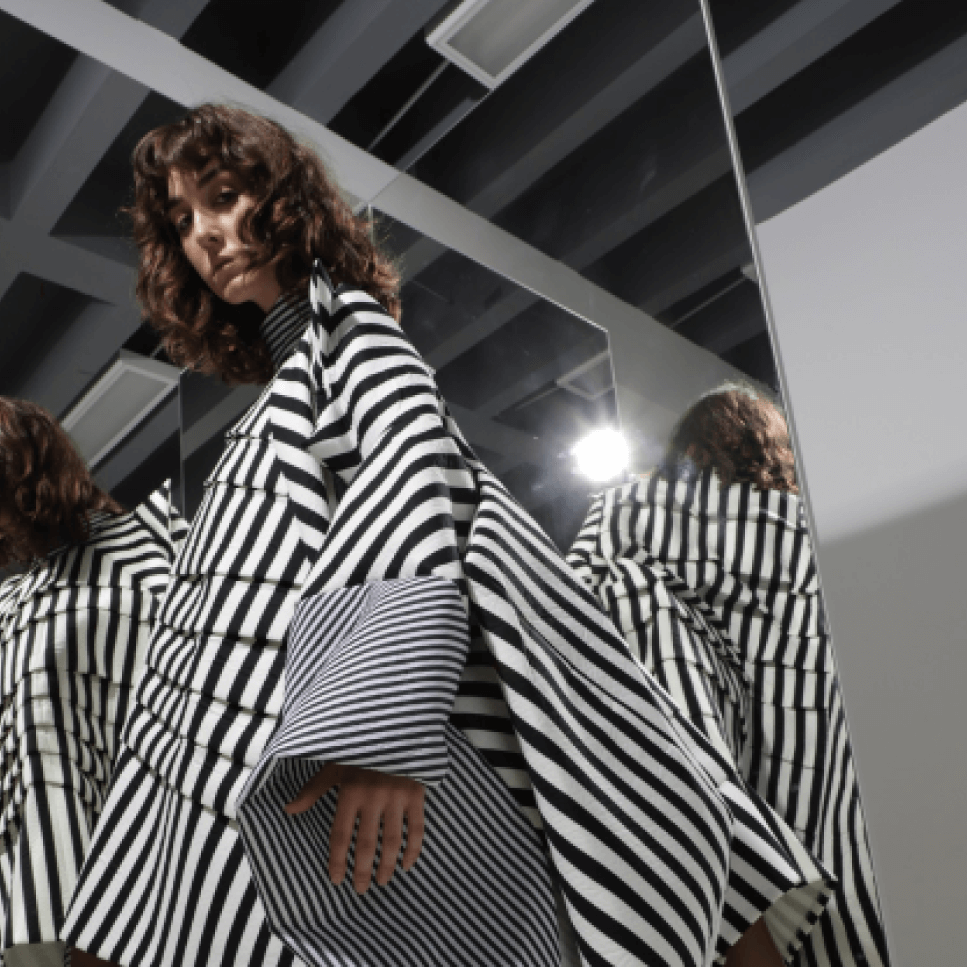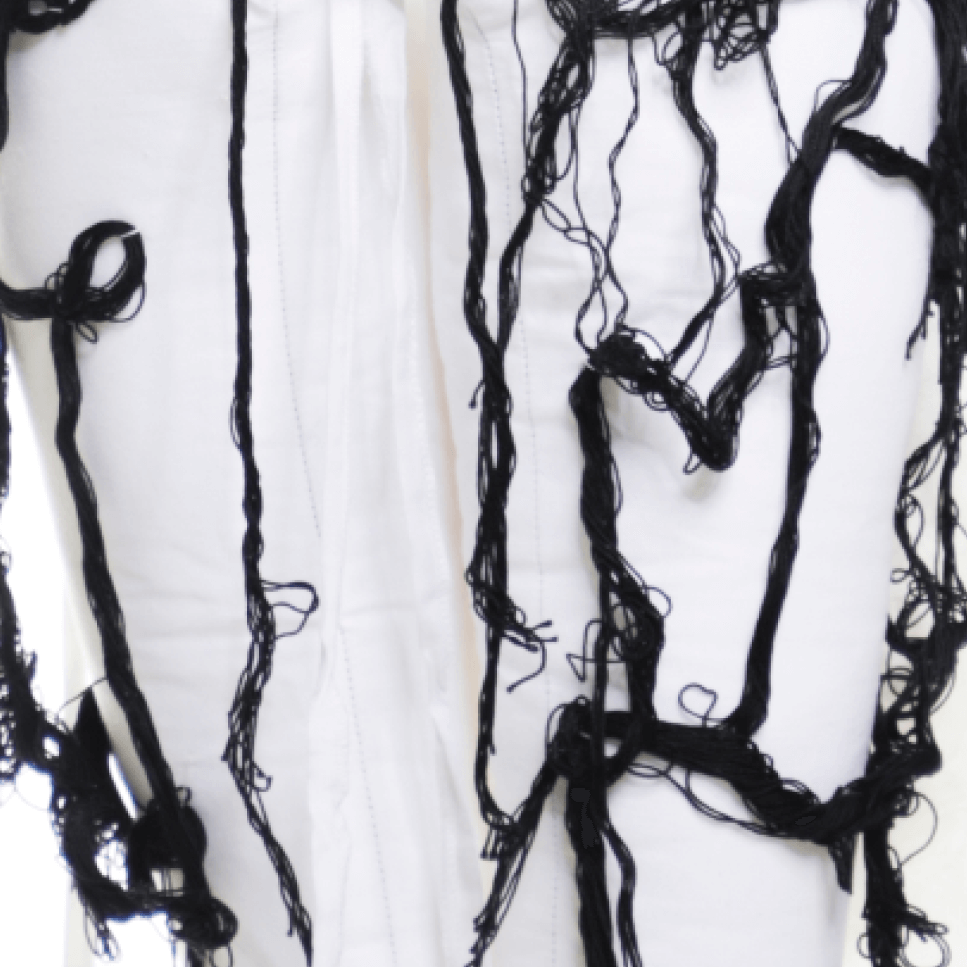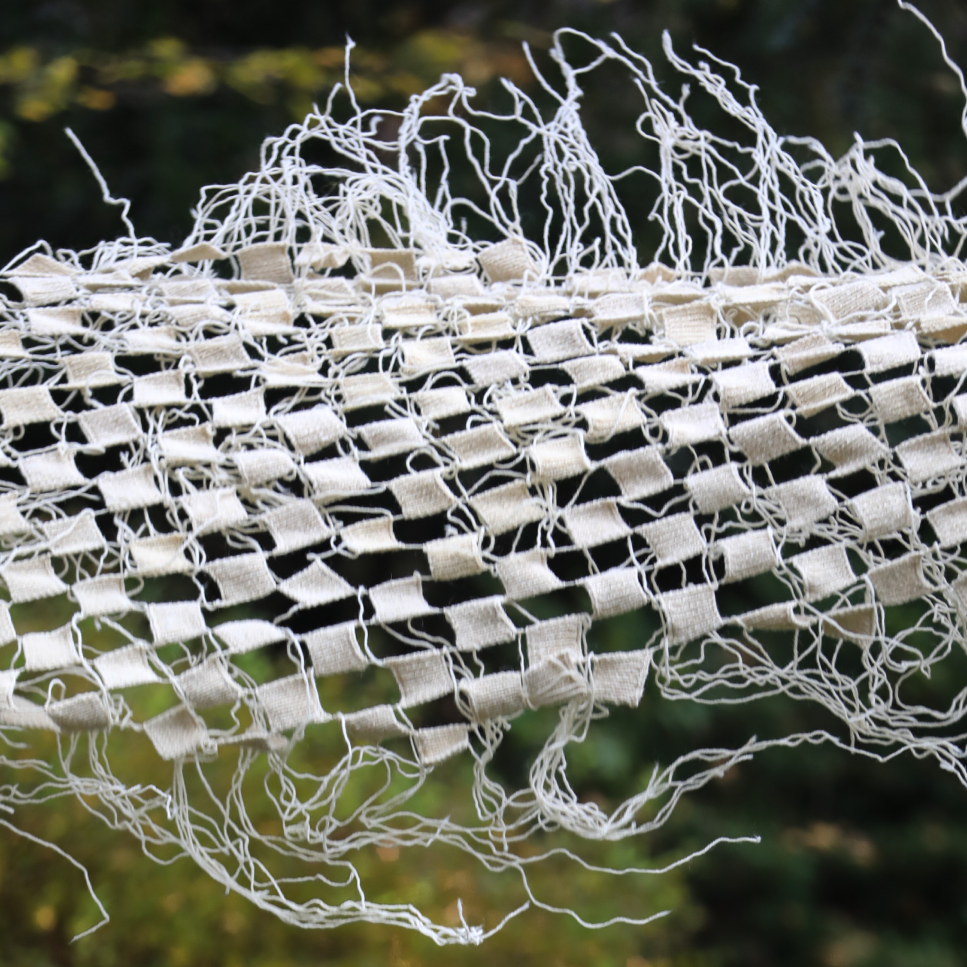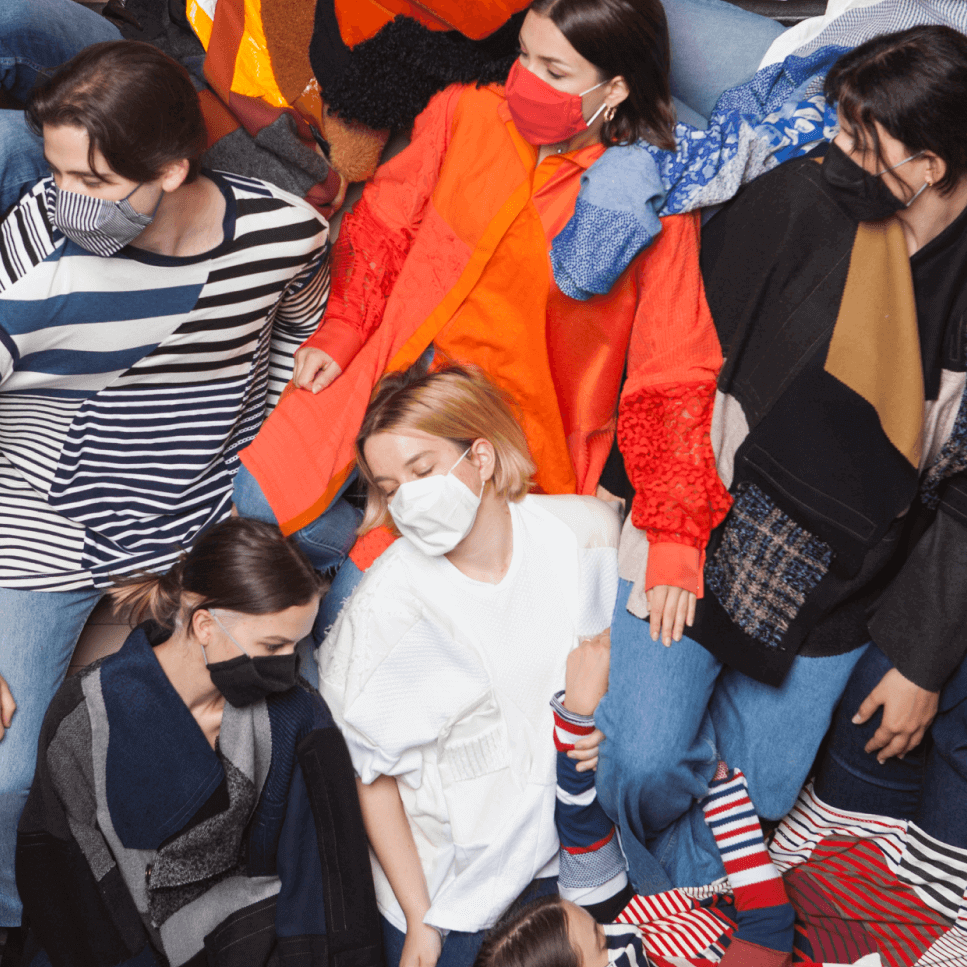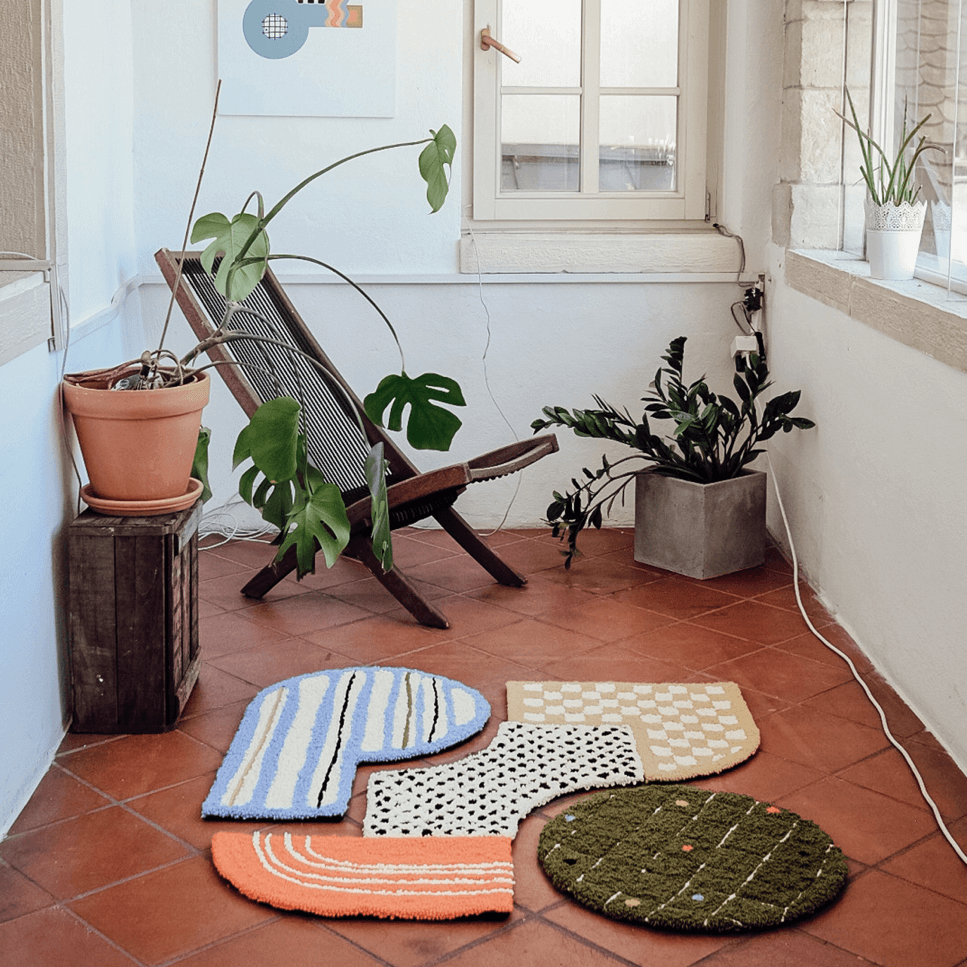MODNA REVIJA V ŽIVO!

LIVE FASHION SHOW! / prof. Almira Sadar
V šolskem letu 21/22 smo se po dveh letih vrnili na fakulteto. Sprva smo bili previdni, med seboj skoraj neprepoznavni z maskami na obrazih. Kmalu smo se ponovno naselili v studijih, začeli klepetati na hodnikih in se zbirati pred kavnim avtomatom ... Lepo se je bilo ponovno pogovarjati v živo, eksperimentirati z materiali in jih opazovati na šiviljskih lutkah pred seboj.
Med korono smo modna dogajanja spremljali preko ekranov, modni oblikovalci in modne znamke so na najbolj izvirne in kreativne načine prikazovali svoje kolekcije online v obliki risb, kolažev, inovativnih fotografij, modnih filmov ...
Ker sama ne maram velikih spektaklov, se mi je zdelo, da bi lahko alternativne načine predstavitev ohranili in razvijali še naprej tudi v okviru študijskih projektov. Šolsko leto namreč vsako leto zaključimo z javno predstavitvijo študentskih del. Ko pa smo študente povprašali, kako se želijo predstaviti v pokoronskem letu, so sozvočno odgovorili: MODNA REVIJA V ŽIVO!
Najverjetneje je modna revija v živo res vznemirljivejša, doživetje dogodka pa edinstveno. Takoj sem razumela, da so si študentje ponovno zaželeli veselja in slavljenja mode v živo. Prvi pokoronski projekt smo namenili naravi in odnosu mode do nje, saj je čas pandemije zaznamoval tudi ponovni stik z naravo.
Čas, ki smo ga preživeli doma, je vsakomur pokazal, kako je za kvaliteto življenja potrebna neokrnjena narava. Odobje pandemije je pokazalo, kako lahko ustavitev proizvodnje pozitivno vpliva na okolje. Pandemija je poudarila ranljivost ljudi za okoljske krize. Kot odgovor na to se je povečalo zavedanje o pomenu varovanja in ohranjanja narave.
V svojih projektih so študentje izražali fascinacijo nad lepoto, neverjetnimi oblikami, čudeži in močjo narave, skozi katere se moda vedno znova inspirira. Na drugi strani pa so poudarjali njeno krhkost, skrb za njeno ohranitev in reševanje okoljskih problemov. V svojih kolekcijah so težili k prepoznavnosti svojega stila, k originalnosti in posebnosti v izrazu, s poudarkom na lokalnih znanjih in ročnem delu.
Pandemija je namreč poleg okoljskih in etičnih vprašanj izpostavila tudi pomen lokalne proizvodnje in tradicije. Bolj smo začeli ceniti ročno izdelane izdelke, ki vključujejo trajnostne prakse in izkazujejo individualnost ter lokalne spretnosti v nasprotju z izdelki množične proizvodnje.
Ročno delo izdelkom prida osebno noto. Cenimo delo, vloženo v ustvarjalnem procesu, in smo zato z izdelkom bolj čustveno povezani. Pravzaprav nas je pandemični čas prisil k razmisleku o tem, kako se upočasniti, porabiti manj in kako živeti. Naučil nas je, kako spremeniti življenjski stil, ponovno odkriti lokalne obrti in živeti bližje z naravo.
Sredi zaustavitve smo se sprehajali po gozdovih in parkih ali po skoraj praznih mestih. Izkazalo se je, da lahko sprememba povzroči nove ideje, da je lahko vse drugače, tudi bolje.
Lokalna proizvodnja je v razcvetu, mreže se lokalizirajo, obrti doživljajo preporod. Nenazadnje je to tudi pozitivna sprememba in priložnost za naše študente, ki bodo v kratkem na lokalnem trgu predstavljali svoje inovativne kolekcije oblačil in tekstilij.
Med korono smo modna dogajanja spremljali preko ekranov, modni oblikovalci in modne znamke so na najbolj izvirne in kreativne načine prikazovali svoje kolekcije online v obliki risb, kolažev, inovativnih fotografij, modnih filmov ...
Ker sama ne maram velikih spektaklov, se mi je zdelo, da bi lahko alternativne načine predstavitev ohranili in razvijali še naprej tudi v okviru študijskih projektov. Šolsko leto namreč vsako leto zaključimo z javno predstavitvijo študentskih del. Ko pa smo študente povprašali, kako se želijo predstaviti v pokoronskem letu, so sozvočno odgovorili: MODNA REVIJA V ŽIVO!
Najverjetneje je modna revija v živo res vznemirljivejša, doživetje dogodka pa edinstveno. Takoj sem razumela, da so si študentje ponovno zaželeli veselja in slavljenja mode v živo. Prvi pokoronski projekt smo namenili naravi in odnosu mode do nje, saj je čas pandemije zaznamoval tudi ponovni stik z naravo.
Čas, ki smo ga preživeli doma, je vsakomur pokazal, kako je za kvaliteto življenja potrebna neokrnjena narava. Odobje pandemije je pokazalo, kako lahko ustavitev proizvodnje pozitivno vpliva na okolje. Pandemija je poudarila ranljivost ljudi za okoljske krize. Kot odgovor na to se je povečalo zavedanje o pomenu varovanja in ohranjanja narave.
V svojih projektih so študentje izražali fascinacijo nad lepoto, neverjetnimi oblikami, čudeži in močjo narave, skozi katere se moda vedno znova inspirira. Na drugi strani pa so poudarjali njeno krhkost, skrb za njeno ohranitev in reševanje okoljskih problemov. V svojih kolekcijah so težili k prepoznavnosti svojega stila, k originalnosti in posebnosti v izrazu, s poudarkom na lokalnih znanjih in ročnem delu.
Pandemija je namreč poleg okoljskih in etičnih vprašanj izpostavila tudi pomen lokalne proizvodnje in tradicije. Bolj smo začeli ceniti ročno izdelane izdelke, ki vključujejo trajnostne prakse in izkazujejo individualnost ter lokalne spretnosti v nasprotju z izdelki množične proizvodnje.
Ročno delo izdelkom prida osebno noto. Cenimo delo, vloženo v ustvarjalnem procesu, in smo zato z izdelkom bolj čustveno povezani. Pravzaprav nas je pandemični čas prisil k razmisleku o tem, kako se upočasniti, porabiti manj in kako živeti. Naučil nas je, kako spremeniti življenjski stil, ponovno odkriti lokalne obrti in živeti bližje z naravo.
Sredi zaustavitve smo se sprehajali po gozdovih in parkih ali po skoraj praznih mestih. Izkazalo se je, da lahko sprememba povzroči nove ideje, da je lahko vse drugače, tudi bolje.
Lokalna proizvodnja je v razcvetu, mreže se lokalizirajo, obrti doživljajo preporod. Nenazadnje je to tudi pozitivna sprememba in priložnost za naše študente, ki bodo v kratkem na lokalnem trgu predstavljali svoje inovativne kolekcije oblačil in tekstilij.
In the academic year 2021/2022, after two years, we returned to the faculty. At first, we were cautious and almost unrecognisable with masks on our faces. Soon, we settled back in the studios, started chatting in the hallways and gathered in front of the coffee machine. It was nice to talk face to face again, experiment with materials and observe the materials on the sewing mannequins in front of us.
During the pandemic, we followed fashion events through screens; fashion designers and brands presented their collections online in the most original and creative ways, using drawings, collages, innovative photos, fashion films, etc.
Since I do not like big spectacles, I thought that alternative presentation methods could be preserved and further developed within the framework of study projects. However, when we asked the students how they wanted to present themselves in the post-pandemic year, they unanimously responded: LIVE FASHION SHOW!
Most likely, a live fashion show is indeed more thrilling, and the experience of the event is unique. I immediately understood that the students were eager to experience the joy and celebration of live fashion.
The first post-pandemic project was dedicated to nature and fashion’s attitude towards it, as the pandemic period also marked a renewed connection with nature. The time spent at home showed everyone how untouched nature is necessary for the quality of life. The pandemic period demonstrated how halting production can have a positive impact on the environment. The pandemic has emphasised people’s vulnerability to environmental crises. In response, awareness of the importance of protecting and preserving nature has increased.
In their projects, students expressed fascination with nature’s beauty, incredible forms, wonders, and power. On the other hand, they emphasised nature’s fragility, concern for its preservation and solving environmental problems. In their collections, they strove for the recognition of their style, originality and uniqueness in expression, with an emphasis on local expertise and handwork.
In addition to environmental and ethical issues, the pandemic has highlighted the importance of local production and tradition. We have come to appreciate handmade products that incorporate sustainable practices, showcasing individuality and local skills in contrast to mass-produced items. Handwork adds a personal touch to the products. We value the effort invested in the creative process and are, therefore, more emotionally connected with the final product.
In fact, the pandemic has forced us to think about how to slow down, spend less and live. It taught us how to change our lifestyle, rediscover local crafts and live closer to nature. We walked in forests and parks or through nearly empty cities in the middle of the lockdown. It turned out that change can lead to new ideas and that everything can be different, even better.
Local production is thriving, networks are becoming localised and crafts are experiencing a renaissance.
Indeed, this is also a positive change and an opportunity for our students, who will soon present their innovative clothing and textile collections on the local market.
During the pandemic, we followed fashion events through screens; fashion designers and brands presented their collections online in the most original and creative ways, using drawings, collages, innovative photos, fashion films, etc.
Since I do not like big spectacles, I thought that alternative presentation methods could be preserved and further developed within the framework of study projects. However, when we asked the students how they wanted to present themselves in the post-pandemic year, they unanimously responded: LIVE FASHION SHOW!
Most likely, a live fashion show is indeed more thrilling, and the experience of the event is unique. I immediately understood that the students were eager to experience the joy and celebration of live fashion.
The first post-pandemic project was dedicated to nature and fashion’s attitude towards it, as the pandemic period also marked a renewed connection with nature. The time spent at home showed everyone how untouched nature is necessary for the quality of life. The pandemic period demonstrated how halting production can have a positive impact on the environment. The pandemic has emphasised people’s vulnerability to environmental crises. In response, awareness of the importance of protecting and preserving nature has increased.
In their projects, students expressed fascination with nature’s beauty, incredible forms, wonders, and power. On the other hand, they emphasised nature’s fragility, concern for its preservation and solving environmental problems. In their collections, they strove for the recognition of their style, originality and uniqueness in expression, with an emphasis on local expertise and handwork.
In addition to environmental and ethical issues, the pandemic has highlighted the importance of local production and tradition. We have come to appreciate handmade products that incorporate sustainable practices, showcasing individuality and local skills in contrast to mass-produced items. Handwork adds a personal touch to the products. We value the effort invested in the creative process and are, therefore, more emotionally connected with the final product.
In fact, the pandemic has forced us to think about how to slow down, spend less and live. It taught us how to change our lifestyle, rediscover local crafts and live closer to nature. We walked in forests and parks or through nearly empty cities in the middle of the lockdown. It turned out that change can lead to new ideas and that everything can be different, even better.
Local production is thriving, networks are becoming localised and crafts are experiencing a renaissance.
Indeed, this is also a positive change and an opportunity for our students, who will soon present their innovative clothing and textile collections on the local market.


